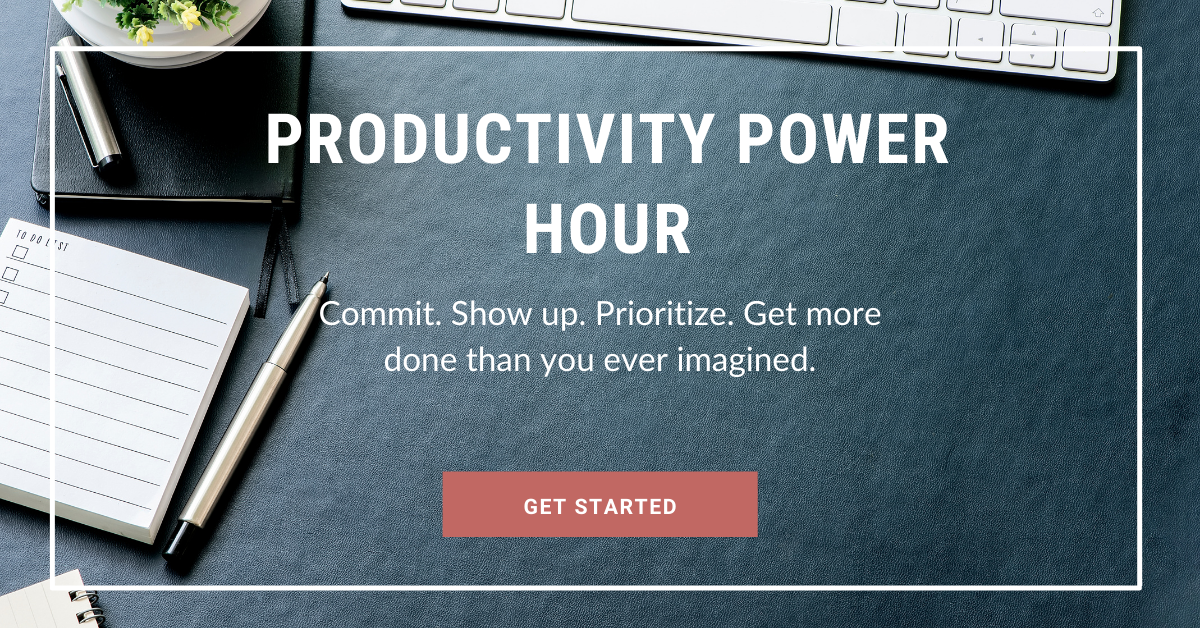Where do we get the most work done and work most effectively? (And, how to effectively share your position with your boss).
Can workers be more productive working from home?
Right now this is the question I’m getting asked more than anything else.
Note: I’m not a lawyer (obviously) so I can’t tell you what to do or how to handle COVID protocols, vaccine mandates, or return to work policies. I do know how to help people be more productive through communication, processes, boundaries, and work environments. No matter what policy your organization implements, conversations around these topics are going to be critical for businesses.
Let me preface this all by defining what we are really talking about here. This blog is about getting work done and where we work most effectively. It is not a question of which lifestyle you prefer. And I think some people are getting their productivity confused with their comfort.
To be clear, I love yoga pants as much as the next person but this conversation is about way more than putting on real pants and a full face of makeup. These are lives, these are incomes to provide for our families, these are careers, these are businesses that matter. We have to be productive to protect those things.
When people ask me this question, I feel like they are asking me to support their stance. They want to be able to run and tell their boss that a productivity expert said this is what we should be doing. But, before I can answer that question, there has to be a more honest conversation about what it means to be productive.
So, my first question to you is…(honest answers now)…where are you most productive?
Truly…
- Where do you get the most work done?
- Where do you get the right work done?
- Where can you focus?
- Where can you get in the zone?
- What has to be true in your environment for you to be successful?
- How has communication been with your team?
- In the last 18 months, have you produced work at the same level of output and quality as you did the 18 months prior? Did you do more?
Deep down, I think you know the answer.
This honest reflection is important. Because the truth is, it is different for everyone. I know that sounds like I’m dodging the question. But, everyone’s home life is different. Three kids under the age of 10 trying to virtually learn, two dogs, a husband on conference calls all day, and no nanny is a very different work environment from the two roommates who work from desks in their respective bedrooms. It’s different.
Plus, we’ve got to factor in various brain and personality types. For some people, two weeks in quarantine felt like a jail sentence while others were relieved to have a socially acceptable reason to stay in for months. We’re different.
Some of us can’t focus in an open floor plan office, others are barely distracted every time the cat walks across your keyboard. We’re different.
And, we can’t ignore your actual role at work and job responsibilities. Are you a project manager? A writer? An architect? You may need to be in a physical location because of it. It’s different.
For all these reasons, your productivity level at home can only be discussed within the context of all these factors.
After you decide where you truly do your best work…
What can you do to ensure your productivity no matter where you work?
Produce. You should produce the best possible work that you can. Location independent. I talk about this when I train people on having better meetings. Too often people use meetings as a time to brag about what we’ve achieved. It’s their face time with the boss so they jam in all the talking points about their successes. Instead, your work should speak for itself. I promise you that if you are producing, your boss already knows. When you do good work, serve others, and support your teammates, you and your work shine. You can produce no matter what environment or situation you are in. That will lead to having a voice and being part of the decision-making team.
Stop Comparing. This whole thing isn’t fair. And yes, your friend might really have it better than you. Heck, even within your own office things might be “unfair.” One team might be able to work 100% remote, another hybrid, and another, fully back in the office. It’s not equal. It’s not going to be. Focus on what you can control and influence.
Define What Matters. There were so many good things that came out of this time. More time with family. More time to cook healthy meals or savor the homemade desserts you actually had time to make. Not wasting time putting the perfect outfit together or sitting in traffic. It’s critical to pay attention to what you enjoyed or benefitted from during this time. Collaborate with your family and work to ensure those things stick around. We are in a different world now than the one we “left.” Mindfulness and personal well-being are more recognized as necessary. Don’t let everything you love about this time fly out the window just because you are going back to the office. Prioritize those things and make time for them. And, if you are a team leader, how can you bring those elements into the workplace? More flexible hours? One day a week at home? Yoga or meditation breaks?
Have a System. Companies that manage remote work well put systems in place to understand the workload and assist with communication. Remote work puts the spotlight on bad management. The hands-off leaders were ineffective and lost control. The micromanagers drove everyone crazy. Have a system for checking in on each other that works: regular meetings, standard operating procedures, task management tools like Asana. There have never been more tools to help you succeed here. No matter if you are the boss or an employee, you can benefit from a system that will help you feel in control.
Clearly Communicate. Communication and collaboration are going to be critical post-pandemic. We are going to see a rise in the number of workers who want to continue with remote work. With people in various locations and possibly in various time zones. Businesses should be ready with protocols for how, when, and via what modes of communication the organization is expecting employees to use. Essentially creating some organizational best practices for effective communication in this evolving environment. Best practice examples include defining expected response times for emails, texting only in the case of real emergencies, and encouraging people to sign off of Slack at the end of the day.
And always be responsible and respectful. Be respectful of the decision your leaders make even if you don’t agree with them. It’s toxic to bad-mouth the boss. If you don’t agree with the decision, decide if you can deal with it or not. If you really can’t, that’s your right. But, it might be time to look for another position. I know that’s harsh but I don’t want you complaining about it over and over again to your spouse, your co-workers. That’s toxic and wastes time. It’s time to collaborate. To help each other when we are overwhelmed. It’s time to build each other up. And respect the decisions of our team leaders. Your company leaders are trying to figure this out. They don’t have all the answers. And I promise they want them as much as you do.
If you do have the opportunity to share your WFH opinion with your leadership team, here are a few tips:
Right now, good leaders are thinking about their bottom line AND their people. They are working to find solutions that maximize productivity and keep their employees engaged and happy at work. We work for people, not companies. Relationships drive us. This will be a transitional period for everyone. The rules will change. It will be frustrating. Some days will be better than others. Be a team member people love to work with no matter where that is.
Stay in Touch
Enter your email to get my top productivity tips each week. Plus, be the first to know when fresh content is ready!
Hi, I’m Sarah

The productivity coach who creates programs for overwhelmed professionals who are ready to say buh bye to stress, anxiety, mental clutter, and analysis paralysis and hello to clarity, purpose, and success.
I bring systems and quick productivity wins to your day so that you can get back control of your time, accomplish more, and be present when you are done at 5.
Curious About Working Together?
Let’s chat! It’s completely free and I’ll give you my recommendations to improve your productivity system starting today!




